Until the lockdown took over my life, I enjoyed a mostly happy solo existence. I read for long uninterrupted periods, took spontaneous walks, cooked whatever I want and ate at odd hours. At the same time I cherished my restaurant meals with friends, meet ups at coffee houses and visits in one another’s homes.
When Covid pushed me into a bubble, devoid of connections in real time, I experienced bouts of loneliness, which prompted dreams of sharing my old lady days in community with like-minded women in an updated version of the Golden Girls.
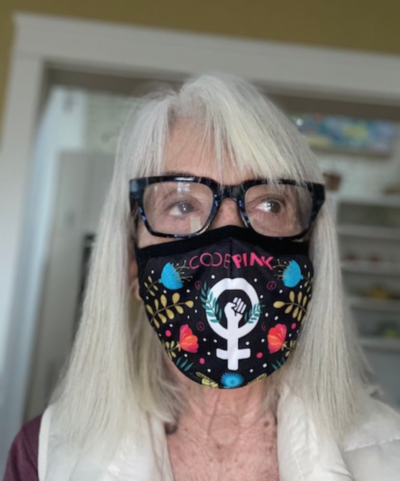
Yours truly in lockdown mode
My Golden Girls vision involves co-existing with other aging women in homes that annex one another, or sharing a grand old house or smallish apartment building. We would develop support plans for helping ailing members and hold frequent potluck dinners. We would pool our talents to create programs like art classes, book clubs, yoga classes and travel excursions.
Fortunately shared housing models for older women are already in place—ones that we can draw inspiration from.
Outside of Paris is the “Babayagas House.” Babayagas is the Russian word for “witch,” dating back to an era when witch wasn’t pejorative but referred to a wise woman.
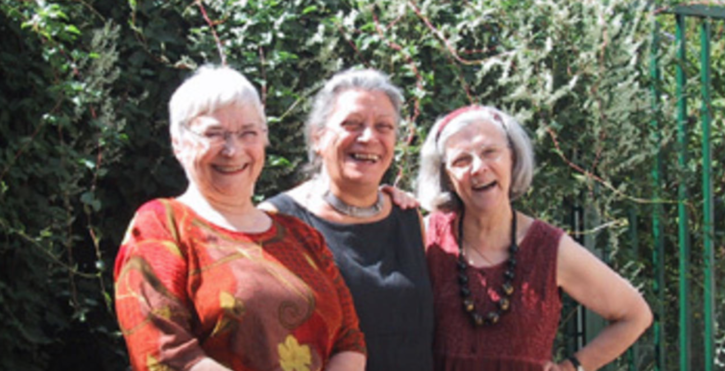
Happy residents of the Babayagas House
It took the Babayagas 15 persistent years of endless meetings with local authorities and architects before they were able to receive government financing to build Babayagas House. This five-story apartment building just outside of Paris contains 21 units at affordable rates, close to the metro, shops and cinema.
To quote one of the founders: “Growing old is not an illness. We want to change the way people see old age and that means learning to live differently.”
Across the channel in Northern London another group of independent, determined older women, spent 18 years planning and raising money for a shared housing community, which opened in 2018. This project, known as OWCH or Older Women’s Co-Housing, has 26 flats, including low-income units. Each flat has its own separate entrance that opens onto a common green area surrounded by beautiful gardens maintained by the residents. As with the Babayagas, OWCH is close to public transportation, amenities, and cultural offerings.
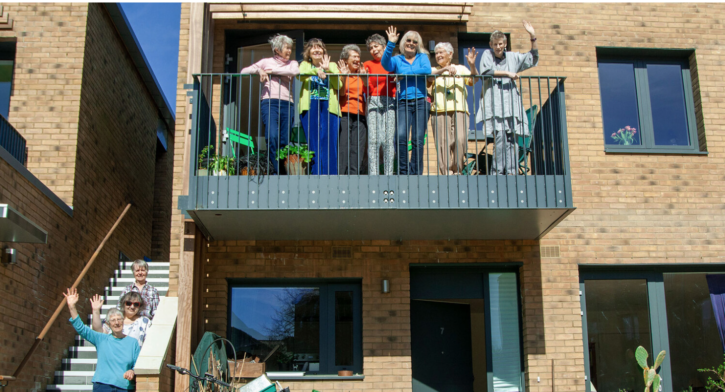
Residents of OWCH
The OWCH philosophy centers on creating a “mutually supportive environment,” where most of the women knew one another prior to purchasing a unit. Their thinking is that you “grow the community first,” rather than put up a building and hope those who move in will get along. They credit the Suffragettes for inspiring their vision of an independent community where older women can be fully themselves.
A group of older Canadian women are in the process of drafting their version of shared housing, calling it “Radical Rest Homes.”
One of their intentions is to live differently from their parents, whom they regard as having been passively placed in retirement homes and stripped of their autonomy. Like their French and English counterparts, the Canadian women want an active role in shaping their final years.
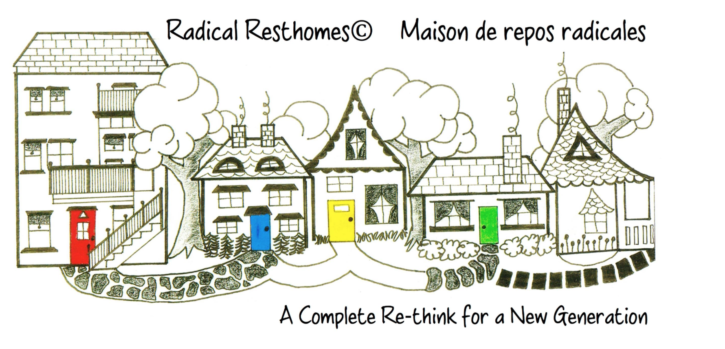 In a search of cooperative housing for older women in the U.S., I found only two options: shared space in a home owned by another woman, or, the less desirable alternative of a for-profit residential facility.
In a search of cooperative housing for older women in the U.S., I found only two options: shared space in a home owned by another woman, or, the less desirable alternative of a for-profit residential facility.
There are blogs that promote an interest in communes for older women, but they haven’t moved off the drawing board. Presently the predominant model is one of women sharing single-family homes with three or four women under one roof. Several websites exist where one can advertise for a roommate(s). Two with ageist names: babyboomster.com; silvernest.com.
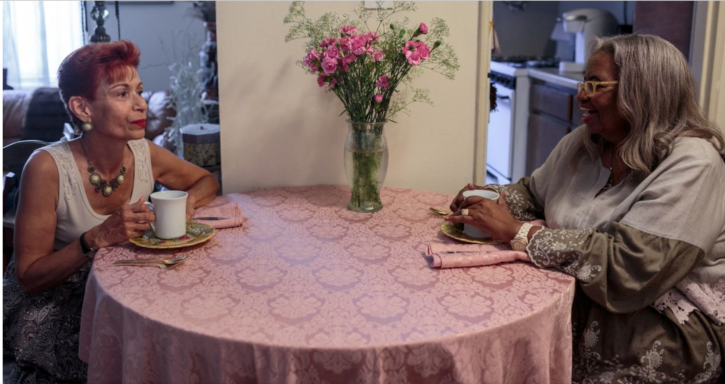
Housemates, Lillian Otero and Janice Raiford drink coffee together almost every morning.
According to a 2012 census the percentage of women over 60 is at the highest level in American history; this number is projected to keep rising. I’m reminded of the old adage, “If you can dream it, you can do it.” What’s stopping you from gathering like-minded friends and starting a co-housing facility in your community? It’s a dream whose time has come.
 In a search of cooperative housing for older women in the U.S., I found only two options: shared space in a home owned by another woman, or, the less desirable alternative of a for-profit residential facility.
In a search of cooperative housing for older women in the U.S., I found only two options: shared space in a home owned by another woman, or, the less desirable alternative of a for-profit residential facility.


